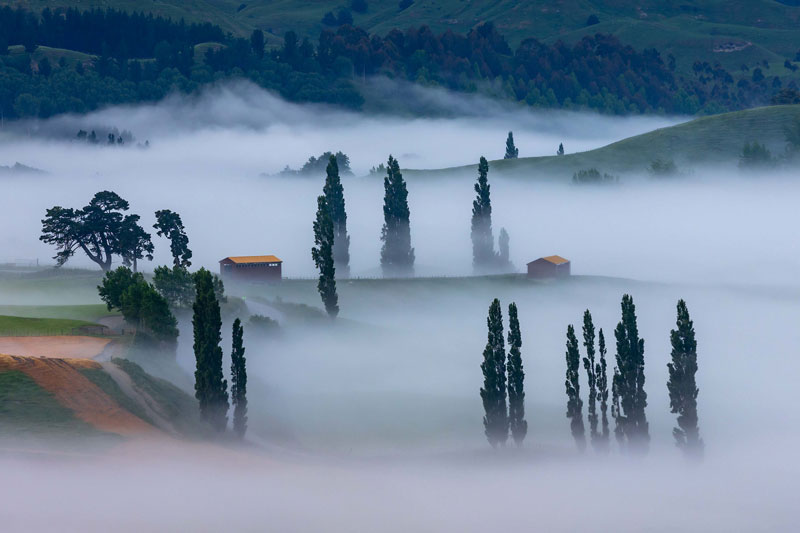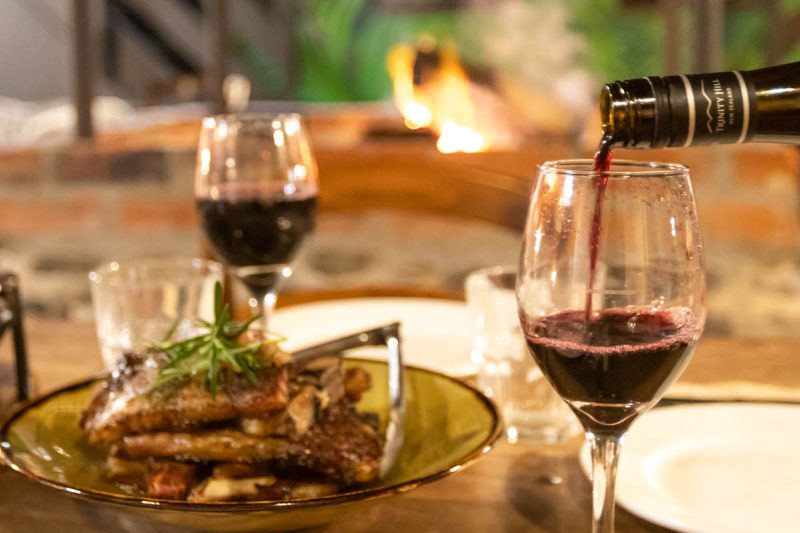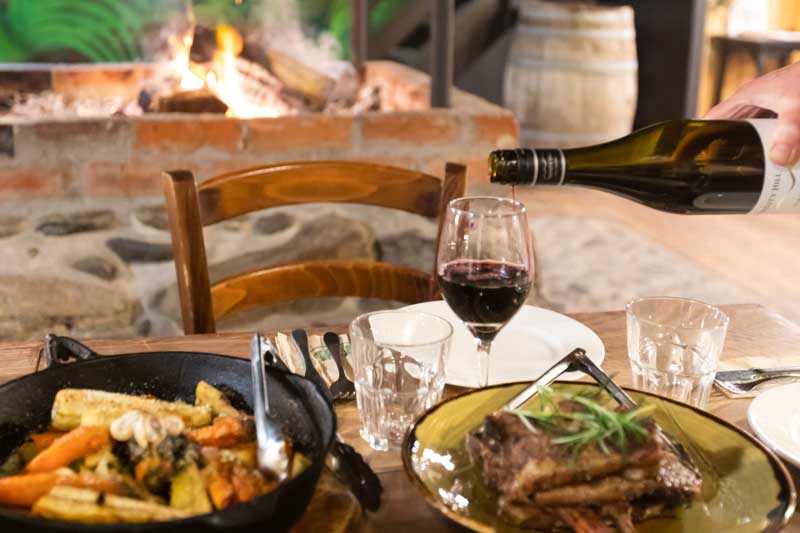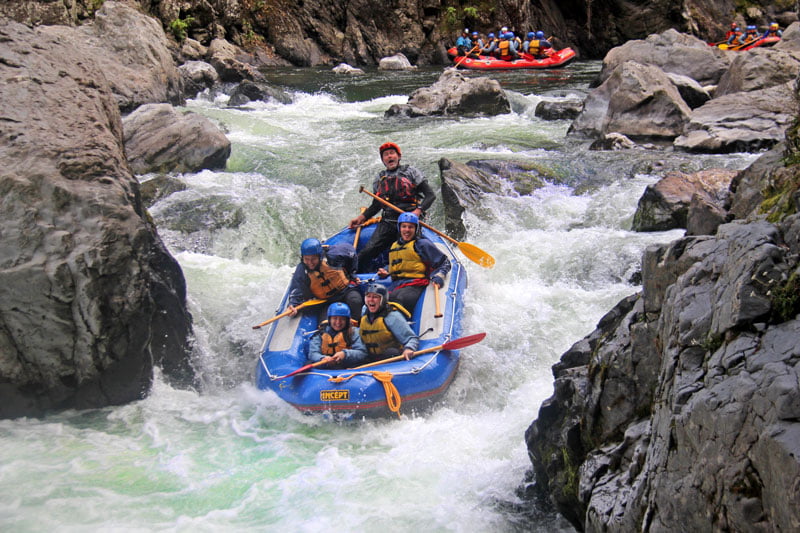What is the Difference Between A High Water and A Low Water Rafting Experience?
Ants and crew running the bottom drop in Foamy Rapid at high flows
A question we are often asked is, how does a rafting trip at high water differ from one at low water? To answer this I thought a few generalisations were in order, followed specifically about what happens on River Valley’s main rafting river in New Zealand, the Rangitikei.
First of all though. Do not get hung about river flow as being some sort of indicator of how much fun a rafting trip can be. We find that our customers have fun at every level we raft at.
Let’s start with a look at how a river differs at different flows
Flow Stages of a Typical River
Low Flows – typically mid to late summer on most rivers which are situated in places with a temperate climate. River stays within its normal banks, numerous rocks appear as the river drops. Drops and chutes can be very steep where the water is still channelled.
Normal to Bank Full Flows – the river is still within its normal banks, but can be creating powerful hydraulics at the higher end of these flows.
Flood Stage and Higher – the river will increasingly try and go in a straight line, with the main flow centred in the middle of the river with very powerful eddy lines at the sides. Very powerful hydraulics. Most or all rocks will be covered. The river will have escaped its banks and may be flowing through trees – or even buildings!
Max’s Drop on the Rangitikei River at a Normal Flow
At What Flow Stages Does Most White Water Rafting Take Place?
Most rafting trips around the world take place on rivers from low flows through to bank full. Running flood stage rivers is dangerous and unpredictable. At the other extreme, rivers can also get too low to raft.
An important point to bear in mind here is that the actual quantity of water at each stage will vary enormously from river to river. For example, at Flood Stage on our home river, the Rangitikei, 100 cumecs (a cumec is 1000 litres of water passing a given point per second – in this case that is 100,000 litres passing you if you were standing on the bank every second) and up is flood stage. This same flow would be viewed as seriously low water on the Colorado River through Grand Canyon.
How Does The Difference in Flow Effect Your Rafting Experience?
The following comments about the difference changes in flow make to your rafting experience are more specific to the Rangitikei River.
High Flows
In general, and this really is generalising, on rain fed rivers that do not rely on huge amounts of snow melt such as the Rangitikei, higher flows, that is high normal through to bank full to flood, will be encountered in winter and spring.
Your experience will invariably have more to do with waves and water hydraulics than with steep drops and precise manoeuvring. The water will often be cooler. In most situations trips should not be undertaken at flood stage.
Normal Flows
This is the flow range where most rafting trips take place. On our river, the Rangitikei, this means a good mix between precise manoeuvring and fun waves and drops. At the higher end of these flows we walk several rapids as they are too consequential to raft if things do not go right.
This flow range is most commonly encountered from mid spring through to midsummer, but can be encountered at any time of year depending on rainfall.
Low Flows
We find that many of our customers specifically love low flows. Why?
** Precise manoeuvring is required meaning that there is a great deal of crew participation
** This means paddling, doing overs (high sides) and moving round the boat
** The water is warm.
** It is fun.
** There is a general feeling on the boat that there are less consequences involved in getting it “wrong”.
At a certain level of low flow we switch to duckies (inflatable kayaks) which opens up a whole new dimension of customer participation. These boats are run without a guide in the boat, but guides with the trip, in a group guided situation. You become responsible for your own craft.
Duckie fun on the Rangitikei River at low water in the summer
Summary
Each flow level on a river offers a different type of experience. From a harder driving style encountered at higher flows to the precise manoeuvring and steep high drops generally found at lower flows.
All rafting can be fun, and each flow and river is different. I guess the thing to do is to try them all!
Brian Megaw



















































































